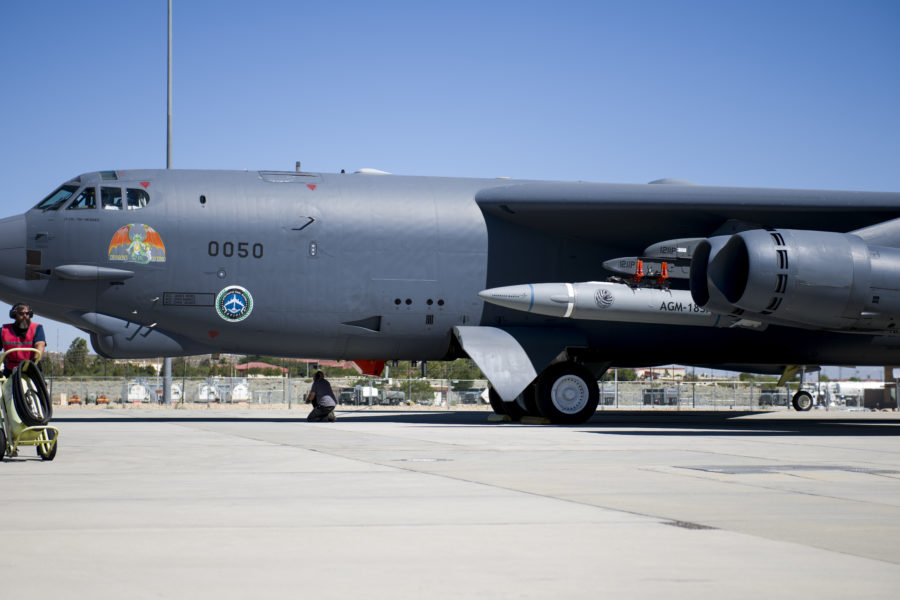Editor’s Note: This story was updated Aug. 23 to include a statement from Lockheed Martin.
The Air Force announced it conducted another test of the AGM-183 Air-Launched Rapid Response Weapon (ARRW) hypersonic missile on Aug. 19. But while the service said the event provided useful data, it declined to say whether the vehicle hit its planned target and did not characterize the test as “a success,” as it has done on some previous flights.
The shot, off a B-52H bomber, was a “full prototype operational hypersonic missile” and the test focused on the ARRW’s “end-to-end performance,” the Air Force said—a term that encompasses the captive carry of the missile, firing its ATACMS booster, release of the hypersonic glide vehicle, and receiving telemetry from it. Lockheed Martin is the prime contractor for ARRW.
“The Air Force gained valuable new insights into the capabilities of this new, cutting-edge technology,” the service said, but a spokeswoman for the 96th Test Wing declined to say whether the missile struck its intended target. The service would also not say what was expected from the test and could not immediately say if the test marked the last for the ARRW, which has had a patchy record.
“While we won’t discuss specific test objectives, this test acquired valuable, unique data and was intended to further a range of programs such as ARRW and HACM,” the Hypersonic Attack Cruise Missile now in development, the spokesperson said.
“We also validated and improved our test and evaluation capabilities for continued development of advanced hypersonic systems,” she said.
On Aug. 23, Lockheed Martin released a statement approved by the Air Force saying it has “full confidence in the maturity and production readiness of the system.”
“We continue to partner with the U.S. Air Force on ARRW hypersonic-strike capabilities by conducting operational end-to-end testing, further validating the design and production of the system,” the statement added
The Air Force has been under pressure from Congress in recent years to improve its capacity to test hypersonic vehicles both in wind tunnels and in live-fire shots. Lawmakers have complained the capacity is too limited to permit the pace of testing needed to rapidly develop hypersonic capabilities. The Air Force has responded by expanding some test ranges and using airborne platforms to collect telemetry previously collected only by ground-based control centers. Wind tunnel upgrades and new construction are underway.
The Air Force decided to “close out” the ARRW program in this fiscal year, service leaders said in presenting their 2024 budget request to Congress. Air Force Secretary Frank Kendall said the service has shifted its focus to HACM, which is a smaller, air-breathing hypersonic missile, in contrast to ARRW, which is a boost-glide hypersonic vehicle. HACM is being developed by Raytheon and Northrop Grumman, which is developing its scramjet engine and recently opened a facility in Maryland to produce hypersonic system elements.
Unlike the large ARRW, which requires a bomber to carry it, HACM is expected to be carried by fighter-sized aircraft. However, the 96th Test Wing said it cannot yet divulge what the “threshold platform”—the first aircraft—will be to employ the HACM. Service officials have suggested it will be the F-15EX.
After the ARRW program concludes, it is supposed to generate some “leave behind” usable assets, but the Air Force has not explained how many rounds this will entail, or whether they would be used for further test or in actual combat.

